Serengeti-Ndutu Migration Safari
In the heart of the great migration
This safari invites you to witness one of the most impressive migrations on the planet. Depending on the season, the Ndutu region and the Serengeti plains are the stage for an unforgettable spectacle.
Trip Description
Accomodation
Stay program
day 1
Arusha National Park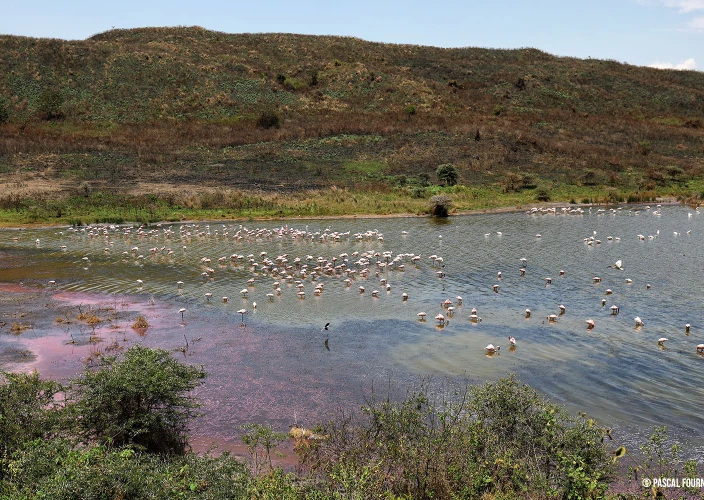
For this first day, we offer you an introduction with the discovery of the animals of Arusha National Park. Very little visited, this park nevertheless reveals an astonishing diversity of animals and especially plants. In addition, the Momella lakes are a refuge for a large number of birds, including both flamingos (greater and lesser). But that's not all... Here, you will have the opportunity to observe two species of primates: the guereza colobus and the blue monkey. Open grasslands will allow you to see giraffes, zebras, buffalo... Picnic lunch. Dinner and overnight at the African View Lodge.
day 2
Arusha - Mto wa Mbu
You will arrive in the small town of Mto wa Mbu where activities begin at the first light of sunrise. On the day's program: meeting the Makonde sculptors and the Tingatinga painters. At noon, you will have lunch at Mama Gift's restaurant, who will prepare a typically Tanzanian meal for you. A short walk through the streets of Mto wa Mbu before enjoying the place where you will stay for the night, the Fig Tree Hotel.
day 3
Oldupai Gorge - Ndutu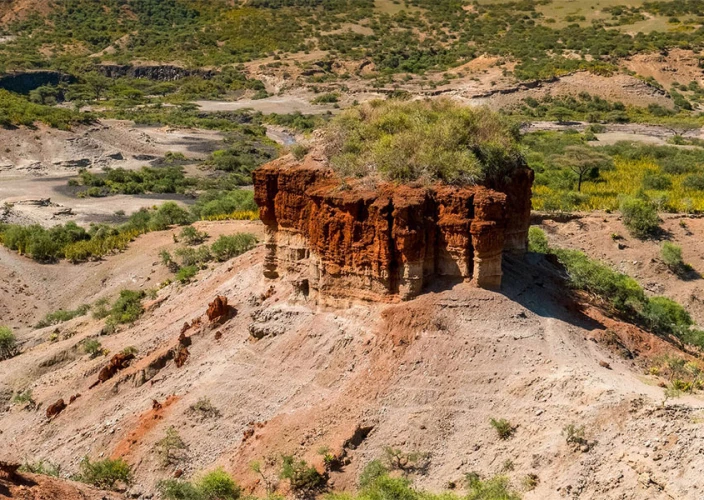
Early departure to the Ngorongoro Conservation Area, where you will stop at a major paleoanthropological site, Oldupai Gorge. A specialized guide will explain the history of our ancestors and you will visit a museum rich in information and material. This is where you will have a picnic before continuing on the tracks towards Ndutu, where you will spend three nights. Dinner and overnight at Tanzania Bush Camp.
day 4
Ndutu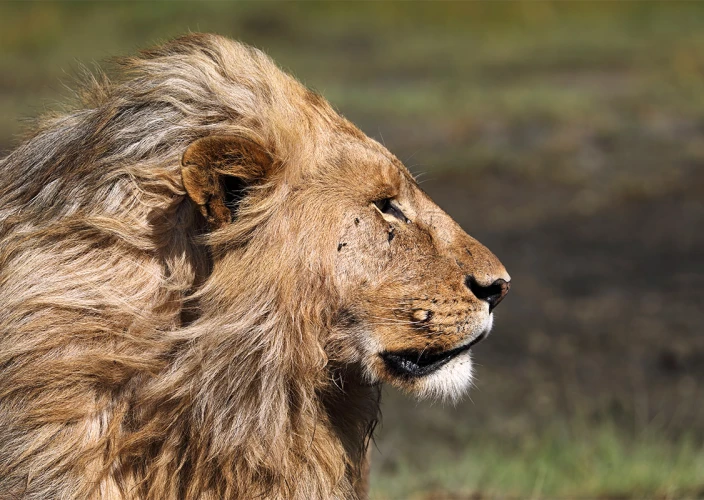
At the beginning of the year, from the end of January to the end of March, thousands of wildebeest give birth every day under the watchful eyes of carnivores, who take advantage of a particularly prolific period in terms of prey. Predators and scavengers therefore have a field day, sometimes resulting in spectacular and conflictual scenes, ideal for observation and photography. In Ndutu, lions and hyenas are numerous, and cheetahs are also present. This is why you will spend 3 nights in a very comfortable mobile tented camp. Ndutu is part of the Ngorongoro Conservation Area in its eastern section, on the border with the Serengeti. Climatic variations are responsible for the shifting birth periods.
day 5
Ndutu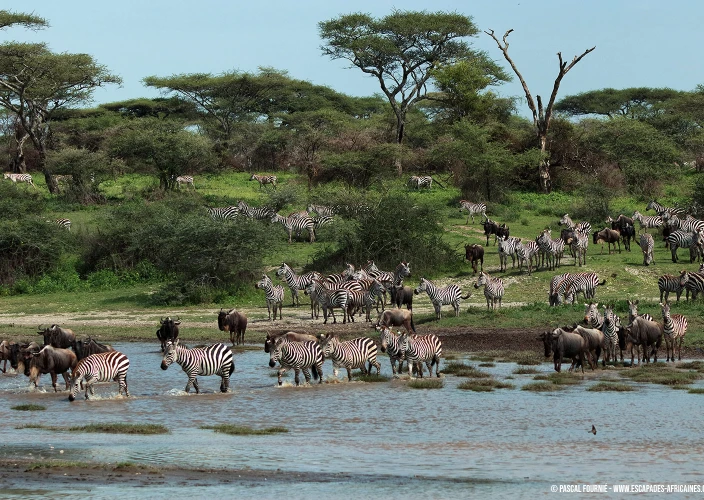
Second full day of safari in Ndutu, the region where the exceptional filmmaker Hugo Van Lawick set up his camp for nearly 30 years. He appreciated this place for the richness of its wildlife, a diversity that will amaze you just as much. Depending on the season, you will focus your observations on the migration of large herbivores. You will also look for lion prides and cheetahs. Picnic during the safari. Dinner and overnight at Tanzania Bush Camp in Ndutu.
day 6
Ndutu - Serengeti National Park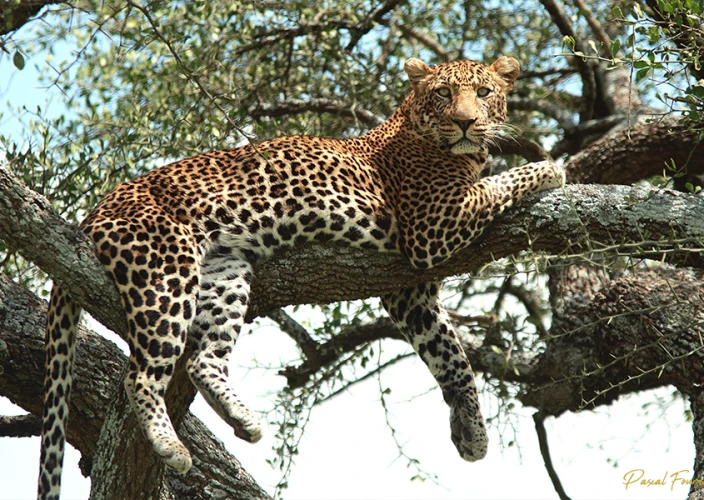
From Ndutu, you will continue your safari in the Serengeti National Park to linger even more in the world of big cats and other predators. Here, you will have a better chance of seeing cheetahs. But be careful, this feline, the fastest land animal, deserves that we pay close attention to our behavior. Keeping a sufficient distance and not blocking its path are rules that everyone must follow. The leopard is also more easily observed in the Serengeti. Among the other animals, you will discover hippos in two different places. And of course, elephants, giraffes, many gazelles and antelopes... Picnic during the safari. Dinner and overnight at Tanzania Bush Camp Central Serengeti.
day 7
Serengeti National Park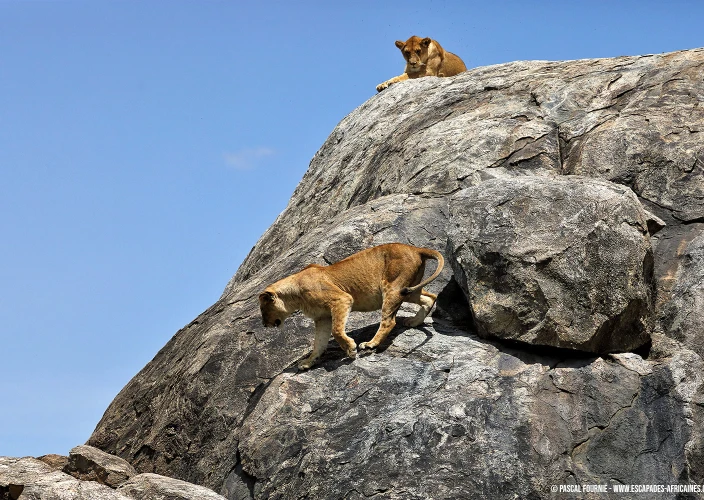
The Serengeti is amazing for its vast open spaces that sometimes seem empty, but from which a serval, a hyena, or small mongooses may suddenly appear. Even lion prides seem to inhabit "desert-like" areas scattered with kopjes, those huge volcanic rocks where felines take refuge, but also groups of baboons. Rest assured, even if the Serengeti sometimes seems empty, you will always have a wonderful surprise around the bend of a track. Whether in Ndutu or in the Serengeti, you will go at your own pace to enjoy every sighting. No matter the animals (large mammal, feline, small bird), your driver-guide will put you in the best conditions to take photos or simply marvel. Picnic during the safari. Dinner and overnight at Tanzania Bush Camp Central Serengeti.
day 8
Ngorongoro Crater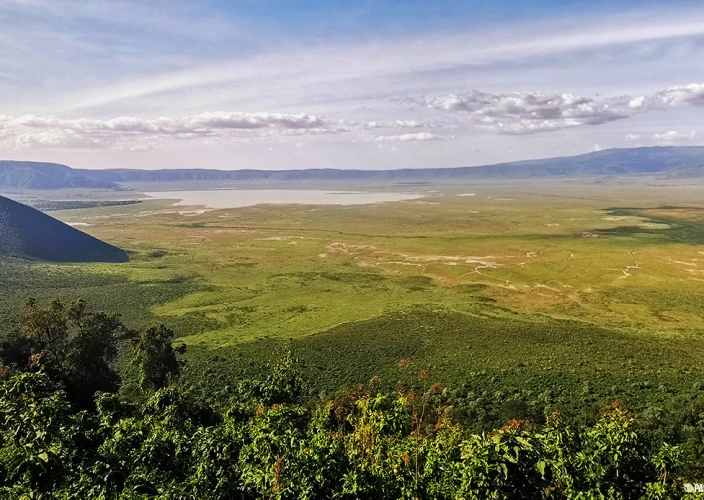
Very early in the morning, you will leave your canvas camp for the Ngorongoro Crater, a natural jewel of exceptional beauty with a breathtaking panoramic view! When you arrive at the crater entrance, you will descend a unique track to discover the wildlife of this Noah's Ark. With a diameter of about 20 km, this caldera (a volcano that has collapsed in on itself) is home to an incredible number of animals, including black rhinos. In addition to herbivores and birds, predators such as lions, hyenas, and golden jackals are relatively easy to spot. At the picnic area located by a lake, you can observe hippos, but also pelicans. The safari time inside the crater is limited, but don't worry, you will be excited, especially if you come across large and old male elephants... In the late afternoon, you will return to the Fig Tree Hotel for the night.
day 9
Mto wa Mbu - Tarangire National Park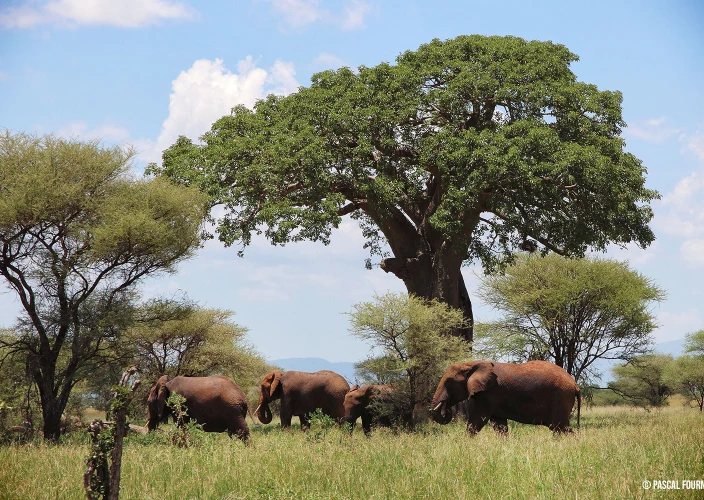
Last national park of your trip, Tarangire, where you encounter the three giants of the savannah: giraffes, elephants, and baobabs. You will discover breathtaking landscapes, a river frequented by many elephants, and wildlife that rivals that of Ndutu and the Serengeti. During this first safari outing, you will get familiar with the terrain while quietly discovering the riches of Tarangire. Dinner and overnight at Tarangire View Camp.
day 10
Tarangire National Park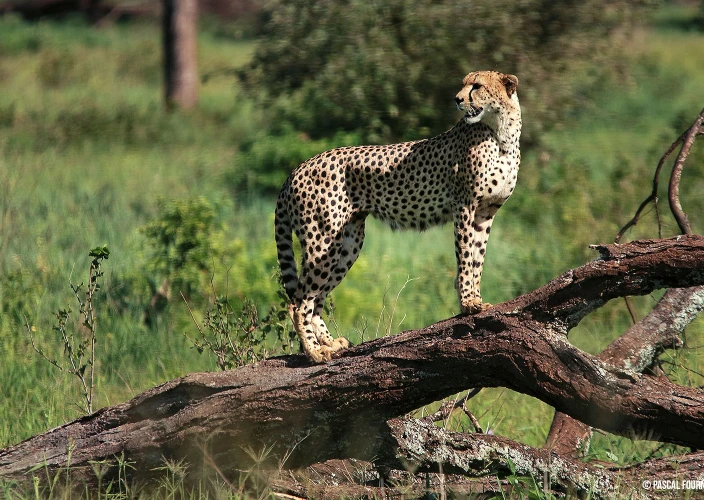
A landscape totally different from the other northern parks, you will discover, on an extensive network of tracks, the many species inhabiting Tarangire, especially the elephants which can gather in groups of dozens of families, sometimes representing gatherings of 200 to 300 individuals. In the marsh areas, bird species are numerous and will delight ornithologists, while abandoned termite mounds are sometimes the refuge of dwarf mongooses and the lookout for red-headed barbets. Tarangire stands out from the other northern parks by the large number of baobabs. The three big cats are present: lions, cheetahs, and leopards. The latter, more discreet, is more difficult to observe. Highlights • Elephant families • Several lion prides • Presence of leopards to spot in the trees • Cheetahs • Large herds of buffalo • Significant presence of giraffes • Birds with more than 550 species • Numerous baobabs You will be accommodated at the Tarangire View Camp to enjoy, for this end of the safari, a place that will remind you of the "Out of Africa" atmosphere.
day 11
Tarangire - Arusha - Kilimanjaro AirportDeparture in the early morning for Arusha, where you will stop for lunch at the Tembo Club. Then, transfer to the airport in case of a flight in the late afternoon or at night.
- Duration : 11 days from
- Price : From €3,350 per person
- Destinations: : Tanzania
A website by
Customize your trips with Quotatrip and receive tailor-made offers directly in your inbox.
Discover a country